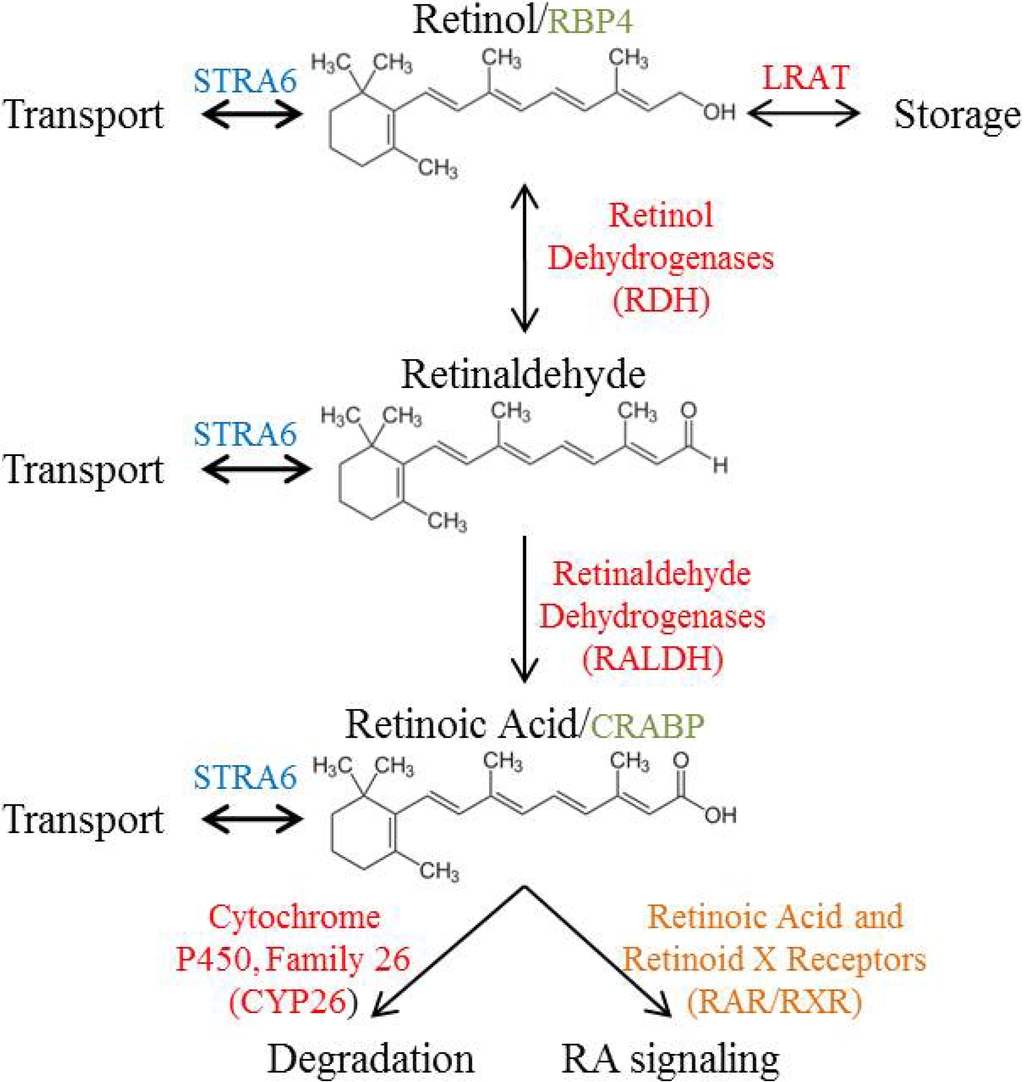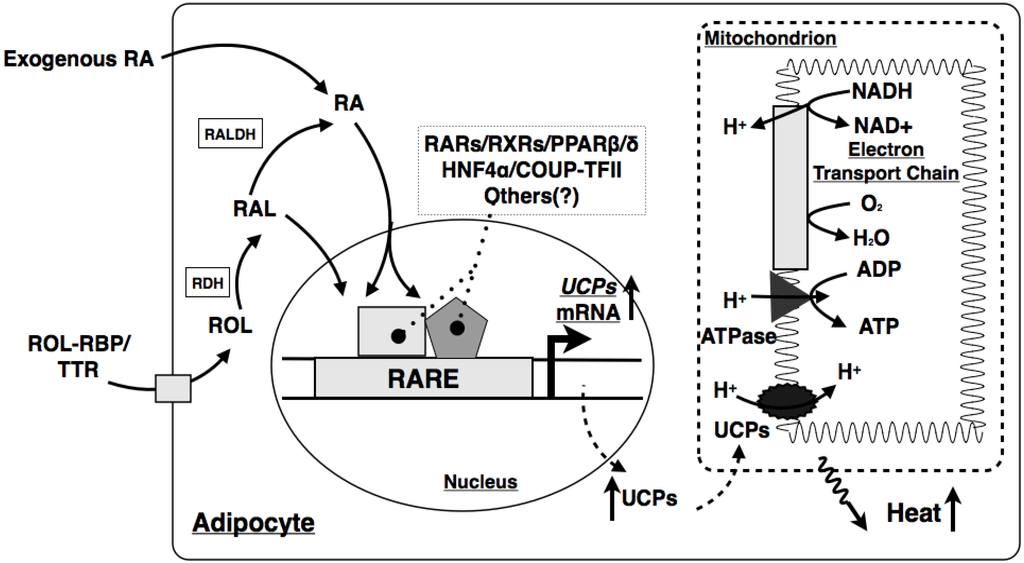��
ARE HIGH AMOUNTS OF VITAMIN A TOXIC?
Checking the Pulse of Vitamin A Metabolism and Signaling during Mammalian Spermatogenesis | HTML
https://www.mdpi.com/2221-3759/2/1/34/htm��
http://www.cell.com/trends/neurosciences/fulltext/S0166-2236(12)00153-1
��
��
Retinol receptor in the bone and their roles
http://journal.frontiersin.org/article/10.3389/fendo.2015.00031/full
��
ARE HIGH AMOUNTS OF VITAMIN A TOXIC?
Premium Insurance Caps contains beta-carotene, which is a precursor for vitamin A. However, it is not the same thing as fat-soluble vitamin A. Beta-carotene, which is virtually non-toxic (if not altogether non-toxic), is used make vitamin A in the body on an "as needed" basis. The only side effects that have been documented with extremely high doses of beta-carotene are diarrhea and a yellow-to-orange coloration to the hands and feet. These symptoms disappear upon cessation of beta carotene supplementation or lowering of the dose.
Regarding vitamin A toxicity, Dr. Shari Lieberman writes, "... [vitamin A] can, therefore, be toxic in large amounts. In general, a normal healthy adult must take at least 100,000 IU of vitamin A daily for a period of months in order to display any signs of toxicity. Early signs of toxicity are fatigue, nausea, vomiting, headache, vertigo, blurred vision, muscular incoordination, and loss of body hair. Although all of these symptoms are reversible when vitamin A supplementation is stopped, I would not recommend this dose unless you are under professional guidance. Beta-carotene, on the other hand, can be given for long periods of time virtually without risk of toxicity."
Dr. Michael Colgan says this about vitamin A:
"The medical literature contains about 600 cases of vitamin A poisoning. A lot of these cases have been with women given daily prescribed mega-doses of over 330,000 mcg RE (1,000,000 IS) of cis-retinoic acid for skin complains. Such mega-doses are especially dangerous because they build up in your body fat. World expert on the toxicity of nutrients, Dr. John Hathcock of Iowa State University and the Food and Drug Administration, concludes that toxicity of vitamin A does not occur for most people in normal health until they take a dose above 1,000 RE per kilogram bodyweight. That's 70,000 mcg (230,000 IU) for a 70 kg (154 lb) athlete. He does cite some reports of headache, intracranial hypertension, and skin lesions in children and sick individuals at intakes of only 10,000 - 15,000 mcg RE, but none with normal adults. In any case, sensible supplementation [with vitamin A] does not even approach such figures. We have never found an athlete that needed more than 5,000 mcg RE (16,500 IU) [of vitamin A] per day."
Again, we do not use "straight" vitamin A in Premium Insurance Caps (or any of our products), but instead use beta-carotene. 7-14 capsules of Premium Insurance Caps contain 12,500 - 25,000 IU of beta-carotene, which is the suggested Optimal Daily Intake (ODI). This amount, and perhaps even higher amounts, is fine because our body uses beta-carotene selectively to obtain however much vitamin A is needed, and discards what it does not need.Are high amounts of vitamin A toxic? | Hammer Nutrition
https://www.hammernutrition.com/knowledge/faqs/are-high-amounts-of-vitamin-a-toxic��
Recommended Intakes
Intake recommendations for vitamin A and other nutrients are provided in the Dietary Reference Intakes (DRIs) developed by the Food and Nutrition Board (FNB) at the Institute of Medicine of the National Academies (formerly National Academy of Sciences) [5]. DRI is the general term for a set of reference values used for planning and assessing nutrient intakes of healthy people. These values, which vary by age and gender, include:
Recommended Dietary Allowance (RDA): Average daily level of intake sufficient to meet the nutrient requirements of nearly all (97%�C98%) healthy individuals; often used to plan nutritionally adequate diets for individuals.
Adequate Intake (AI): Intake at this level is assumed to ensure nutritional adequacy; established when evidence is insufficient to develop an RDA.
Estimated Average Requirement (EAR): Average daily level of intake estimated to meet the requirements of 50% of healthy individuals; usually used to assess the nutrient intakes of groups of people and to plan nutritionally adequate diets for them; can also be used to assess the nutrient intakes of individuals.
Tolerable Upper Intake Level (UL): Maximum daily intake unlikely to cause adverse health effects.
RDAs for vitamin A are given as retinol activity equivalents (RAE) to account for the different bioactivities of retinol and provitamin A carotenoids, all of which are converted by the body into retinol (see Table 1). One mcg RAE is equivalent to 1 mcg retinol, 2 mcg supplemental beta-carotene, 12 mcg dietary beta-carotene, or 24 mcg dietary alpha-carotene or beta-cryptoxanthin [5].
Table 1: Recommended Dietary Allowances (RDAs) for Vitamin A [5]
Age Male Female Pregnancy Lactation
0�C6 months* 400 mcg RAE 400 mcg RAE
7�C12 months* 500 mcg RAE 500 mcg RAE
1�C3 years 300 mcg RAE 300 mcg RAE
4�C8 years 400 mcg RAE 400 mcg RAE
9�C13 years 600 mcg RAE 600 mcg RAE
14�C18 years 900 mcg RAE 700 mcg RAE 750 mcg RAE 1,200 mcg RAE
19�C50 years 900 mcg RAE 700 mcg RAE 770 mcg RAE 1,300 mcg RAE
51+ years 900 mcg RAE 700 mcg RAE
*Adequate Intake (AI), equivalent to the mean intake of vitamin A in healthy, breastfed infants.
International Units and mcg RAE
Vitamin A is listed on the new Nutrition Facts and Supplement Facts labels in mcg RAE [8]. The U.S. Food and Drug Administration (FDA) required manufacturers to use these new labels starting in January 2020, but companies with annual sales of less than $10 million may continue to use the old labels that list vitamin A in international units (IUs) until January 2021 [9]. To convert IU to mcg RAE, use the following [7]:
1 IU retinol = 0.3 mcg RAE
1 IU supplemental beta-carotene = 0.3 mcg RAE
1 IU dietary beta-carotene = 0.05 mcg RAE
1 IU dietary alpha-carotene or beta-cryptoxanthin = 0.025 mcg RAE
RAE can only be directly converted into IUs if the source or sources of vitamin A are known. For example, the RDA of 900 mcg RAE for adolescent and adult men is equivalent to 3,000 IU if the food or supplement source is preformed vitamin A (retinol) or if the supplement source is beta-carotene. This RDA is also equivalent to 18,000 IU beta-carotene from food or to 36,000 IU alpha-carotene or beta-cryptoxanthin from food. Therefore, a mixed diet containing 900 mcg RAE provides between 3,000 and 36,000 IU vitamin A, depending on the foods consumed.Vitamin A �� Health Professional Fact Sheet
https://ods.od.nih.gov/factsheets/VitaminA-HealthProfessional/��
Best Vitamins for Your Liver | Livestrong.com
https://www.livestrong.com/article/81109-vitamins-liver
Jul 01, 2019 �� Liver injury can occur when these vitamins are taken in high doses �� 100 to 400 times the recommended daily intake (RDI) of niacin, which is 14 to 16 milligrams per day, and 10 times the RDI for vitamin A, which is 700 to 900 micrograms daily. That said, it is important to get enough of these nutrients from your diet.
Author: Jody Braverman��
Trends in Neurosciences
A vitamin for the brain
Kirsty D. Shearer
Patrick N. Stoney
Peter J. Morgan
Peter J. McCaffery
Published:September 07, 2012DOI:https://doi.org/10.1016/j.tins.2012.08.005
Affiliations Institute of Medical Sciences, School of Medical Sciences, University of Aberdeen, Foresterhill, Aberdeen AB25 2ZD, Scotland, UK
In the central nervous system (CNS) the function of retinoic acid, the active metabolite of vitamin A, is best understood from its action in guiding embryonic development; as development comes to completion, retinoic acid signaling declines.However, it is increasingly recognized that this signaling mechanism does not disappear in the adult brain but becomes more regionally focused and takes on new roles. These functions are often tied to processes of neural plasticity whether in the hippocampus, through homeostatic neural plasticity, the olfactory bulb or the hypothalamus.
The role of retinoic acid in the control of plastic processes has led to suggestions of its involvement in neural disorders, both degenerative and psychiatric.
This review presents a snapshot of developments in these areas over recent years.
A vitamin for the brain: Trends in Neurosciences
https://www.cell.com/trends/neurosciences/fulltext/S0166-2236(12)00153-1��
J. Dev. Biol. 2014, 2(1), 34-49; https://doi.org/10.3390/jdb2010034
Review
Checking the Pulse of Vitamin A Metabolism and Signaling during Mammalian Spermatogenesis
by Travis Kent and Michael D. Griswold *
School of Molecular Biosciences and the Center for Reproductive Biology, Washington State University, Pullman, WA 99164, USA
Abstract: Vitamin A has been shown to be essential for a multitude of biological processes vital for mammalian development and homeostasis. Its active metabolite, retinoic acid (RA), is important for establishing and maintaining proper germ cell development.During spermatogenesis, the germ cells orient themselves in very distinct patterns, which have been organized into stages. There is evidence to show that, in the mouse, RA is needed for many steps during germ cell development.
Interestingly, RA has been implicated as playing a role within the same two Stages: VII and VIII, where meiosis is initiated and spermiation occurs.
The goal of this review is to outline this evidence, exploring the relevant players in retinoid metabolism, storage, transport, and signaling. Finally, this review will provide a potential model for how RA activity is organized across the murine stages of the spermatogenic cycle.
Keywords: retinoic acid; Vitamin A; testis; spermatogenesis; pulseChecking the Pulse of Vitamin A Metabolism and Signaling during Mammalian Spermatogenesis | HTML
https://www.mdpi.com/2221-3759/2/1/34/htm��
��



